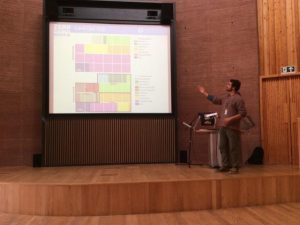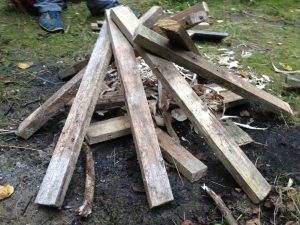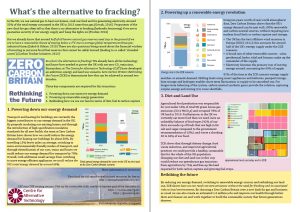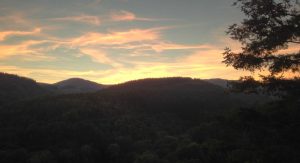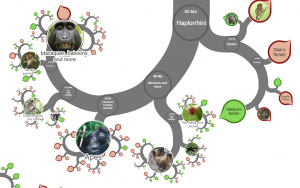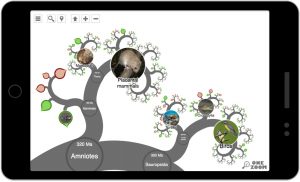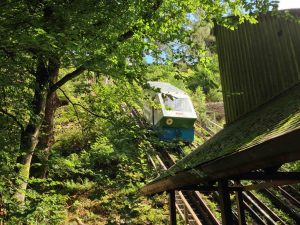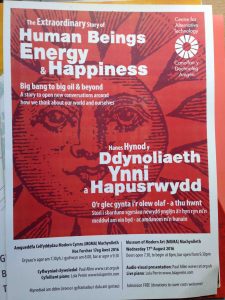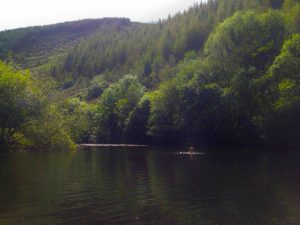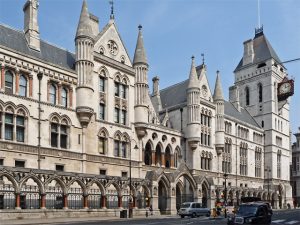
Note: the Royal Court of Justice (RCJ) is open to the public 9am-4.30pm. However no photos are allowed inside the building. Hence, other than a picture of the exterior of the building, I cannot post photos of the courtrooms or my office. The good news is that you can go to the RCJ anytime and see this beautiful building for yourself. And you can go sit and listen to cases – but more on that in the next post.
On my first day at the National Centre of the Citizenship and the Law (NCCL, http://www.nccl.org.uk/) I was, frankly, terrified. I walked through the airport-like security checks at the Royal Court of Justice (RCJ) and I looked up to the massive hall of the RCJ. What was I doing here? A Neuroscience PhD student to work with a charity that develops education programs to teach young people about the Law? Tom and Anna (the NCCL London-based team) must have been crazy to accept me as their intern. Was I really going to be useful to them? I hoped with my whole heart that my brain hadn’t just become used to learning about the cerebellum and nothing else.
As I waited on the red cushions on the side of the entrance for Anna to pick me up, I looked around. Quite a few people were passing through security, some carrying trolleys of what I expected were piles and piles of documents. Huge paintings hung high over the hall, pictures of judges in their crimson robes looking proud and distant. Members of the public walked in, amazed to find themselves in a building that looks just like a cathedral, but is the location of the second and third highest courts in England and Wales.
Finally, the little digital numbers on my phone changed to 10:00 and Anna appeared. She gave me a big smile and I followed her through the colonnaded corridor and old wooden doors with golden handles to the office.
And so my adventure at NCCL started.
NCCL is part of the Egalitarian Trust, which includes the Gallery of Justice Museums, the City of Caves and NCCL, with offices in Nottingham, London and Manchester.
The learning experiences that NCCLoffers include tours of heritage sites and mock trials acted out by the children on different crimes (more on those next post!). NCCL has a big aim: ‘to empower and inspire young people to live and work within the law’. Have you ever thought how much of your daily life is drenched in law-related issues? No? Well, me neither, until I started my internship here!
From my first day I discovered two things: firstly, I loved being at NCCL the moment Tom gave me a beautifully detailed plan for my internship, with aims, topics, timescale and who to ask for extra information. It was just so strange to have a defined plan: you have a task, you do the work, the task is done! Oh, why aren’t PhDs structured this way? Secondly, I felt I was fit for the job: the tasks Tom gave me involved digging for papers, finding ideas, researching relevant sources. I have always loved that part of my PhD: research evidence, past papers, opinions, etc., and then make sense of all the information gathered to build your own plan. Moreover, Law turned out to be extremely fascinating!
I started researching the two main topics that Tom gave me: Public Legal Education and Diversity in the Judiciary.
So, I dived into the legal system, learning about the different courts, judges and cases and into the different organizations that provide educational programs about the Law. I also managed to buy a great book I saw referenced (if you can, read it, Feminist Judges, Hunter, McGlynn and Rackley) and started reading it.
Over the first week I collected tonnes of information, teaching myself a completely different subject. I also went along to a tour around the building and one of the courtrooms, led by Anna. She took the group to one of the courtrooms dedicated to civil cases (there was no stand for the jury) and I watched as she told us wonderful facts and anecdotes about the RCJ and the Law. We also walked by the robes exhibition: how did I never come to the RCJ before? This place is amazing!
At the end of my first week Tom went over my first findings with me and in the afternoon we had a meeting with one of NCCL’s external collaborators, Professor Leslie Moran at Birkbeck University to better define my tasks.
As I left NCCL at the end of my first week, the church bell next to the RCJ started ringing its beautiful melody, which I wish I could post here.
Read Wait by the entrance on the red cushions (1) in full

